Following on from the disastrous experience of adding new cherry shrimp to the Fireplace Aquarium I decided to give the shrimp their own aquarium with no predatory fish! I built them their own customised Shrimphaus and after a couple weeks of equilibrating the water chemistry and biology I added some Bloody Mary shrimp sourced from Pro Shrimp. They all arrived alive and in good shape.
Drip acclimatising new shrimp
Shrimp can go into shock when their water parameters change suddenly, so it is recommeded to get newly arrived shrimp used to the new water slowly by adding the new water dropwise over several hours to a temporary shrimp holding container. When the holding container is full, remove half the water and continue the drip. After three of these cycles the shrimp will be essentially in the new water and can be safely added to the aquarium. The acclimatisation setup was easy to rig and went smoothly. The shrimp never appeared distressed and when added to their new home went off exploring straight away. I made a video showing an easy way to set this up.
New Bloody Mary shrimp in the Shrimphaus
Shrimp keep plants clean
I had noticed the beginning of some type of black algal growth on the plants but the shrimp went after that and cleaned it all up. In this low-tech set-up the plants will grow slowly so shrimp keeping it nice could be important. Amano shrimp are well known for devouring algae and it’s nice that the cherry shrimp behave similarly.
Bloody Mary shrimp colouration
Although both Bloody Mary shrimp and cherry shrimp are the same species, Neocaridina davidi, and both are red, they are red in a different way. With traditional cherry shrimp the shell (carapace) is opaque and contains the pigmentation, whereas with Bloody Mary shrimp the carapace is transparent and the interior of the shrimp is a smoothly pigmented red colour. Apparently this comes from a heritable mutation common to Bloody Mary shrimp, Black Rose shrimp and Chocolate shrimp.
One, maybe two, of the shrimp are much paler in colour than the others. Are these still Bloody Mary shrimp? They have the transparent carapace and pinkish undertones so seem similar. In some shrimp females tend to be much more strongly coloured than males, but that isn’t well known with Bloody Mary shrimp. We’ll see how these all develop over time.
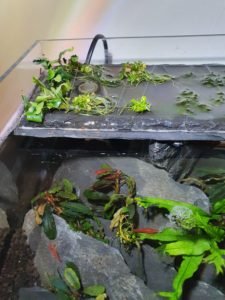
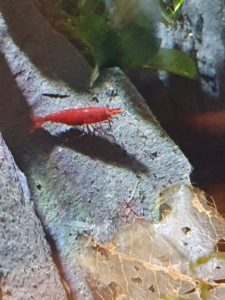
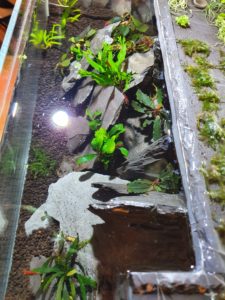

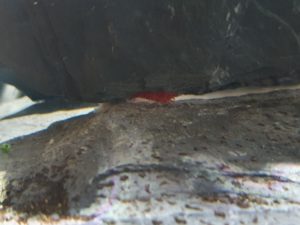
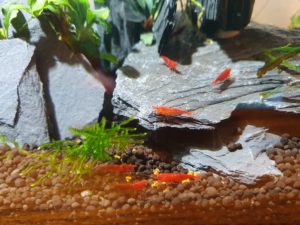
Heather says:
Nice shrimp action video!